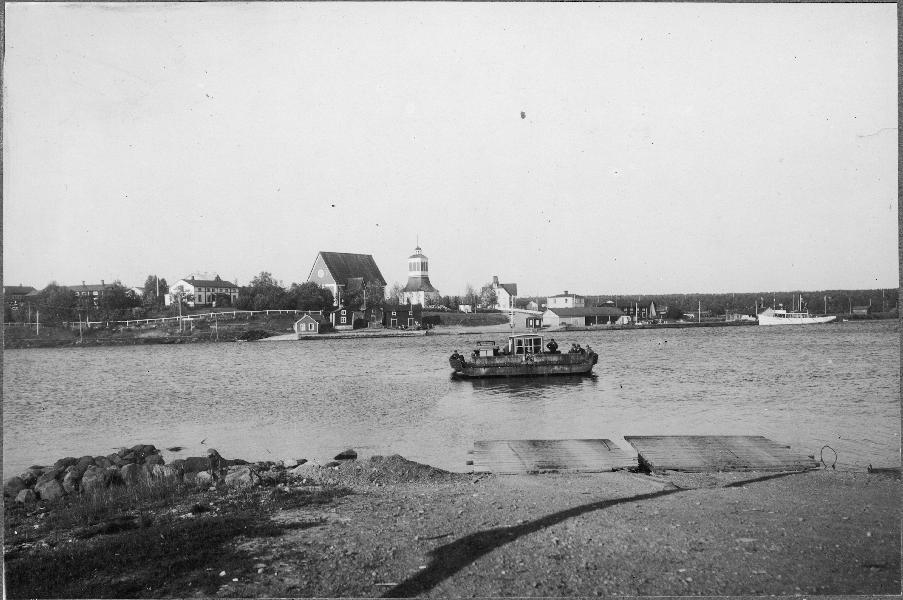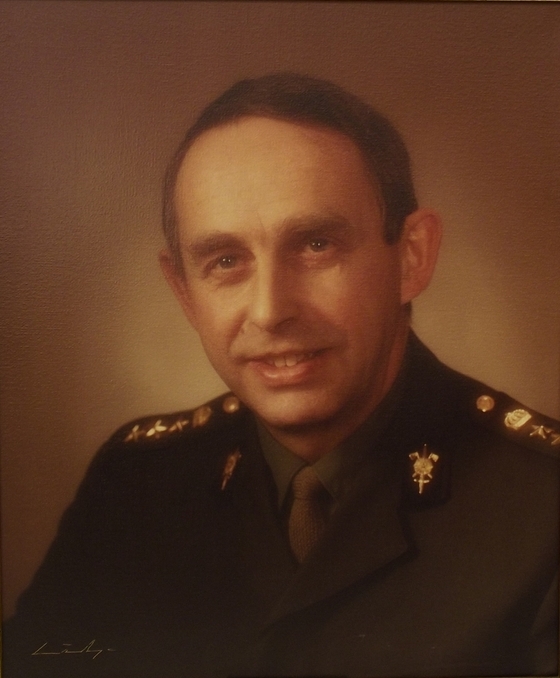|
Västernorrland Regiment
The Västernorrland Regiment ( sv, Västernorrlands regemente), designation I 21, is a Swedish Army infantry unit which operated in various forms the years 1869–1983, 1991–2000 and from 2022. It is located in Sollefteå Garrison in Sollefteå with a detachment in Östersund. History The regiment was the only regiment that grew out of the 1812 conscription organization and originated in Västernorrland Conscription Battalion (''Västernorrlands beväringsbataljon'') which was formed on 19 October 1854. The conscription battalion was until 29 March 1869 subordinate to the commander of Jämtland Ranger Regiment, Jämtland Ranger Corps (No 23). From 29 March 1869, the battalion became an independent unit and on 1 January 1887, the name Västernorrland Battalion was adopted. On 1 January 1893, the battalion was reorganized into a regiment and adopted the name Västernorrland Regiment (No 29), which in 1902 was adjusted to No 28. In 1914, all order numbers within the Swedish Army wer ... [...More Info...] [...Related Items...] OR: [Wikipedia] [Google] [Baidu] |
Kalmar Regiment
The Kalmar Regiment ( sv, Kalmar regemente), designations I 20, I 21 and Fo 18, was a Swedish Army infantry regiment that traced its origins back to the 16th century. It was merged with another unit to form a new regiment in 1928. It was later reraised and disbanded again in 1997. The regiment's soldiers were originally recruited from Kalmar County, and it was later garrisoned there. History The regiment has its origins in fänikor (companies) raised in Kalmar County in the 16th century. In 1616, these units—along with fänikor from the nearby Kronoberg County—were organised by Gustav II Adolf into Smålands storregemente, of which twelve of the total 24 companies were recruited in Kalmar County. Smålands storregemente consisted of three field regiments, of which Kalmar Regiment was one. Sometime around 1623, the grand regiment was permanently split into three smaller regiments, of which Kalmar Regiment was one. Kalmar Regiment was one of the original 20 Swedish in ... [...More Info...] [...Related Items...] OR: [Wikipedia] [Google] [Baidu] |
Defence Act Of 2000 (Sweden)
The Defence Act of 2000 (prop. 1999/2000:30) was a defence act passed by the Swedish Riksdag on 30 March 2000, and the largest reorganisation of the Swedish Armed Forces since the Defence Act of 1925. The act was a continuation of the policies set in motion by the Defence Act of 1996: shifting the military's focus from the defence of Swedish territory to a more flexible "operational defence* (Swedish: ''insatsförsvar'') for smaller-scale peacekeeping operations in foreign nations. Many military formations were disbanded as a result. Summary The future organisation decided by the Act included, up until 2004, the following military units: * A headquarters, an operational command, and four military district commands. * An army divisional command, formed of an NBC task force and two rifle battalions. * 6 army brigade commands, 16 mechanised battalions, 4 air defence battalions, 4 howitzer battalions, 4 pioneer battalions, 4 maintenance battalions, 6 urban warfare battalions and 1 ba ... [...More Info...] [...Related Items...] OR: [Wikipedia] [Google] [Baidu] |
Home Guard (Sweden)
The Home Guard – National Security Forces ( sv, Hemvärnet – Nationella skyddsstyrkorna) is a military reserve force of the Swedish Armed Forces. It was formally established on May 29, 1940, during World War II upon popular demand. While originally composed of former militia groups, today it comprises half of the Swedish Army, thus constituting the basis of the territorial defence of Sweden. The Home Guard consists mainly of local rapid response units, numbering 17,000 of the 22,000 total Home Guard strength, organised in 40 battalions, with 23 associated auxiliary defence organisations. Most soldiers maintain a civilian job while serving the army part-time. Rapid response units were formed in the early 2000s in parallel to the Swedish government's abolishment of conscription to the Swedish Armed Forces; small-scale conscription has since been reintroduced. The Chief of Home Guard is the commanding officer of the Home Guard, representing 40,000 present and veteran sold ... [...More Info...] [...Related Items...] OR: [Wikipedia] [Google] [Baidu] |
Kiruna
(; se, Giron ; fi, Kiiruna ) is the northernmost Stad (Sweden), city in Sweden, situated in the province of Lapland, Sweden, Lapland. It had 17,002 inhabitants in 2016 and is the seat of Kiruna Municipality (population: 23,167 in 2016) in Norrbotten County. The city was originally built in the 1890s to serve the Kiruna Mine. The Esrange Space Center was established in Kiruna in the 1960s. Also in Kiruna are the Institute of Space Physics (Sweden), Institute of Space Physics and Luleå University of Technology's Department of Space Science. History Origins Archaeological findings have shown that the region around Kiruna has been inhabited for at least 6,000 years. Centuries before Kiruna was founded in 1900, the presence of iron ore at Kiirunavaara and Luossavaara had been known by the local Sami people, Sami population. In 1696, Samuel Mört, a bookkeeper of the Kengis works, wrote on rumours about the presence of iron in the two hills.Kummu 1997, p. 96. The ore became b ... [...More Info...] [...Related Items...] OR: [Wikipedia] [Google] [Baidu] |
Kalix
Kalix ( sv, Kalix; Kalix dialect: ''Kôlis'', , phonemically ; fi, Kainuu; fit, Kainus) is a locality and the seat of the Kalix Municipality in Norrbotten County, Sweden. The name Kalix is believed to originate from the Sami word ''Gáláseatnu'', or "Kalasätno", meaning "The cold river" the ancient name of the Kalix River. It had 7,299 inhabitants in 2005, out of 17,300 inhabitants in the municipality of Kalix. Kalix Löjrom There is a culinary speciality specific to Kalix, called Kalix Löjrom, also referred to as caviar of Kalix. It is basically fish eggs (caviar) of the vendace, but because of the large influx of fresh water from the huge rivers around and in Kalix, this has transformed the taste of the fish eggs, rendering them unique in flavour to this area alone. It is the special mix of the elements bromine, strontium, iodine, selenium, molybdenum, barium and lithium, along with a unique ratio between strontium and barium, that makes the Kalixlöjrom unique, which ... [...More Info...] [...Related Items...] OR: [Wikipedia] [Google] [Baidu] |
Bengt Gustafsson (general)
General Sten ''Bengt'' Gustaf Gustafsson (2 December 1933 – 15 March 2019) was a Swedish Army officer. He served as the Supreme Commander of the Swedish Armed Forces from 1986 to 1994. Early life Gustafsson was born on 2 December 1933 in Hästveda, Sweden, the son of Gustav Svensson, a radio technician, and his wife Frida (née Lundell). Gustafsson's early interests included football, handball, chess and bridge, running and high jump. In the primary school ( ''folkskola''), he did not like the teacher very well, but in the secondary school ( ''realskola'') it went better, but the adaptation was not quite good, as there was some teachers he found it hard to get along with. Gustafsson also had difficulty in being quiet at the lessons. Gustafsson graduated without any detention in the spring of 1950 with passed grades. Then he worked at a gas station until Christmas 1950, after which he quit there because it was too cold and badly paid. Gustafsson then worked at a social insuran ... [...More Info...] [...Related Items...] OR: [Wikipedia] [Google] [Baidu] |
Supreme Commander Of The Swedish Armed Forces
The Supreme Commander ( sv, överbefälhavaren; acronym: ÖB) is the highest ranked professional military officer in the Swedish Armed Forces, and is by NATO terminology the Swedish chief of defence equivalent. The Supreme Commander is the agency head of the Swedish Armed Forces and formally reports to the Government of Sweden, though normally through the Minister for Defence. The primary responsibilities and duties of the Supreme Commander (and the charter for the Armed Forces) are prescribed in an ordinance issued by the Government. The Supreme Commander is, apart from the honorary ranks held by the King of Sweden and in the past other members of the Swedish Royal Family, by unwritten convention normally the only professional military officer on active duty to hold the highest rank (a four-star General or Admiral). An exception was made 2009-2014 when Håkan Syrén was chairman of the European Union Military Committee. The present Supreme Commander, General Micael Bydén, took ... [...More Info...] [...Related Items...] OR: [Wikipedia] [Google] [Baidu] |
Carlsson I Cabinet
The first cabinet of Ingvar Carlsson ( sv, Regeringen Carlsson I) was the cabinet of Sweden between 12 March 1986 and February 1990. The cabinet was formed as a direct consequence of the assassination of the incumbent prime minister Olof Palme on 28 February 1986. After which the Speaker of the Parliament, Ingemund Bengtsson, in accordance with the Constitution of Sweden discharged all ministers. In the course of the first cabinet of Ingvar Carlsson, Sweden — as well as most other western countries in the late 80s — enjoyed a period of economic expansion. The cabinet undertook a reform of the Swedish tax system, which meant that more income tax went directly to the municipalities, instead of the state. The reform also meant that a flat capital gains tax was implemented. During these years Sweden saw two widely publicised political scandals; the Ebbe Carlsson affair and the Bofors scandal. Politics After the assassination of prime minister Olof Palme on 28 February 1986, the ... [...More Info...] [...Related Items...] OR: [Wikipedia] [Google] [Baidu] |
Riksdag
The Riksdag (, ; also sv, riksdagen or ''Sveriges riksdag'' ) is the legislature and the supreme decision-making body of Sweden. Since 1971, the Riksdag has been a unicameral legislature with 349 members (), elected proportionally and serving, since 1994, fixed four-year terms. The 2022 Swedish general election is the most recent general election. The constitutional mandates of the Riksdag are enumerated in the ''Instrument of Government'' (), and its internal workings are specified in greater detail in the Riksdag Act ().Instrument of Government as of 2012. Retrieved on 16 November 2012. [...More Info...] [...Related Items...] OR: [Wikipedia] [Google] [Baidu] |
Norrland Logistic Battalion
The Norrland Logistic Battalion ( sv, Norrlands trängbataljon, Trängbat/I 5), previously Norrland Logistic Corps ( sv, Norrlands trängkår, T 3) was a Swedish Army logistic unit operating between 1893 and 2004. The unit was first based in Stockholm, then for over 100 years in Sollefteå and finally in Östersund. History The unit was raised 1893 as a battalion and förlades till Stockholm. Sollefteå municipal community (''municipalsamhälle'') offered the Swedish state to locate the logistic battalion to a couple of agricultural properties at Remsle mo next to the northern shore of the Ångerman River, and by a decision on 17 September 1893, 57 hectares and 3 are, were handed over free of charge to the state provided that Norrland Logistic Battalion was actually located in Sollefteå. The unit was relocated to Sollefteå in May 1898. The unit became a corps in 1902 and in the 1910s, the corps consisted of two logistic companies and a medical company with a total of 15 offic ... [...More Info...] [...Related Items...] OR: [Wikipedia] [Google] [Baidu] |
Materiel
Materiel (; ) refers to supplies, equipment, and weapons in military supply-chain management, and typically supplies and equipment in a commercial supply chain context. In a military context, the term ''materiel'' refers either to the specific needs (excluding manpower) of a force to complete a specific mission, or the general sense of the needs (excluding manpower) of a functioning army. An important category of materiel is commonly referred to as ordnance, especially concerning mounted guns (artillery) and the shells it consumes. Along with fuel, and munitions in general, the steady supply of ordnance is an ongoing logistic challenge in active combat zones. Materiel management consists of continuing actions relating to planning, organizing, directing, coordinating, controlling, and evaluating the application of resources to ensure the effective and economical support of military forces. It includes provisioning, cataloging, requirements determination, acquisition, distrib ... [...More Info...] [...Related Items...] OR: [Wikipedia] [Google] [Baidu] |
.png)



